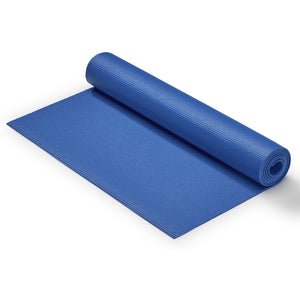Gone are the days of Jane Fonda and jazzercise. As much as we miss the step aerobics, leg warmers, and tights, the female workout has evolved tremendously just in the last 30 years. In the past, women’s fitness has often focused on cardio, flexibility, and conditioning. But any doctor or fitness expert will tell you, that’s just a piece of the puzzle. Research continues to identify multiple amazing benefits associated with women and strength training, leading to a new revolution of strong female athletes. As women continue searching for the best workout programs to fit their needs, discrepancies on how women should workout have arisen.
On one hand, marketing has led women to believe that weight training leads to them becoming “bulky.” On the other hand, we are told that the only way to lose weight is just cardio. Finding the right way to get fit and strong can be overwhelming with the amount of conflicting information that litters the internet.
This article will help our women readers to decipher the myths about women and strength training, the science behind the importance of strength training for women, and some examples of an ideal workout program for women.
Debunk the Myth: Strength Training and Women
There are a lot of myths and unsupported claims when it comes to women and strength training. Being strong is important for taking on everyday tasks–picking up your kids, lifting grocery bags out of the car, running or walking, etc. When it comes to women, strength training is even more important to our long-term health. When beginning a strength program, it's important to go into it with an open mind and with all the facts. So, let’s shake any worries and debunk the myths.
Myth 1: Lifting Weights Makes You Bulky
This is the myth about strength training that we all would like to put to rest. This particular myth has a long history and just isn’t true. Any weightlifter you see that is “bulky,” chose to look that way. A large physique is due to thousands of hours of training, supplements, and specific diets. The truth is, women produce only 15-70 nanograms per deciliter of testosterone by the age of 19 before it begins to decline, which is just not enough to “bulk up.” (1) For women, strength training helps create definition in the muscles and increases your metabolism. Lifting weights also benefits bone density and prevents muscle loss. These positive impacts of strength training on your health should put this myth to rest once and for all.
Myth 2: To Lose Weight You Need to Do Cardio
Cardiovascular training is known for reducing weight and reducing health risks. Strength training provides another alternative to weight loss and getting fit. When you strength train, you are going through the process of muscle hypertrophy. Muscle hypertrophy occurs when muscle fibers are broken down and then rebuilt. This action increases the size and strength of the muscle. While your body is recovering, your metabolism speeds up, requiring you to refuel and replenish more, especially after your workout. Studies show that muscles burn more calories than fat tissue. Moral of this story, the more muscle mass you build the more calories you burn.
Myth 3: One Program Fits All
Not all strength programs are treated the same. Strength training programs should be individualized to the person. They can vary based on goals, level of fitness, and age. The beauty is that you can tailor it to the activities you like. Strength training comes in many different forms, you just have to find the program that matches your goals.
Myth 4: Age Is Just a Number
According to fitness experts, strength training should be considered non-negotiable at any age. At the age of menopause, there is a higher risk of osteoporosis and osteopenia. Older women tend to shy away from strength training in fear of injury; however, this is the most ideal time for women to begin weight training if they haven’t by this stage in their lives. Strength training increases core strength, bone density, and muscle mass. With the right program and guidance, an older woman’s program should be built around strength and recovery.
*Please consult your doctor or healthcare provider before beginning a strength training program
Why Women Need Strength Training
Beginning in their late twenties, women naturally start to lose muscle mass. In fact, studies have shown that after you turn thirty, you may lose 3-8 percent of muscle mass per decade (2). To negate this decline, it’s best to start a strength training routine in your early 20’s, or even as a teenager if you’re active in sports.
Women who begin a consistent strength regimen will see improvements not just in their physical bodies but mentally as well.
Benefits of Strength Training for Women
Strength training doesn’t just help you get strong and look good. It can also help improve your posture, bone density, and aid in fat loss. Below are the biggest benefits of strength training particularly for women:
1. Stronger Bones
Osteoporosis is characterized by a decrease in bone mass. Resistance training–weight bearing exercises, hopping/jumping, and progressive resistance training– has proven to improve bone density in adults (3). The one variable that affects bone health the most is weight-bearing exercises. An example of weight-bearing exercises would be squats or hip thrusts.
2. Reduce Migraines
According to the Office of Women’s Health, three out of four people who experience migraines are women, ages 20 to 45 (4). Because of this, physicians have been looking for a natural cure to help women who often experience migraines.
Medical physicians have found that exercise can help prevent health conditions and decrease the use of daily medications. Strength training in particular is the most popular treatment method for these conditions like migraines. This study showed that a strength regimen of 3 sets of 8-10 reps that included upper body exercises resulted in reduced migraine burden (5).
3. Pre/Post Rehab in Cancer Patients
As the old adage goes, “exercise is medicine.” Recent research has found that resistance training in cancer patients is building momentum. When it comes to breast cancer survivors, resistance training helps in muscle building and the ability to perform daily activities. This type of activity can be a benefit before and after treatment in cancer patients and survivors (6).
4. Help Prepare for Childbirth
If you’re looking to become a mother then it's best to start a strength and conditioning program before your pregnancy rather than during. Exercise helps with hormone balancing, increased strength of the pelvic floor, and decreased risk of gestational diabetes. So, if you’re wondering if strength training is good for you before, during, and after your pregnancy—you got it, mama!
Exercise Variables for a Women’s Strength Routine
Below we will discuss the variables needed to build a successful strength training program for women. We will then provide a sample workout that will have the same base plan that includes strength. You will then be able to incorporate various cardio days, group classes, and flexibility training based on your goals.
1. Strength Training
When building your strength training program, you will first start off with 3 weight lifting days a week. For women, the 3-day training split should focus on full-body routines. A 3-day split allows the most volume to be placed on the large muscle groups, allowing ample time to recover.
Your full body days will focus on compound lifts, which creates a strong foundation to build on. You will also have accessory and isolation movements.
2. Circuit Training
At the end of your session, you will incorporate circuit training. Circuit training focuses on core, accessory exercises, and explosive movements to elevate your heart rate.
3. Flexibility and Mobility
In between your weightlifting days should be a focus on flexibility and mobility. This can be in the form of stretching, yoga, barre, or Pilates. Each practice provides similar outcomes of improved flexibility, mobility, and increasing your range of motion through strength. If these practices have been your main source of exercise, you are now making these a complement to your strength training.
4. Cardio
Cardio is a great tool to help improve your weightlifting. There are two types of cardio that can be added to your strength program, HIIT (high intensity interval training) and steady state cardio. Both are great in helping improve your cardiovascular fitness. Aim for 1-2 days of HIIT training and fill in the rest of your cardio days with steady state.
Sample Workout Plan
| Day 1 | Strength Training |
Back Squat 4x8 Circuit 4-5 rounds with a medicine ball |
| Day 2 | Cardio + Mobility |
45-60 minutes low impact treadmill with an incline HIIT (AMRAP) |
| Day 3 | Group Class |
This should be a class that has a mix of cardio and strength |
| Day 4 | Strength |
Bench press 4x6 Circuit 4-5 rounds with dumbbells |
| Day 5 | Rest or Mobility |
Stretch, Yoga, Barre, Pilates |
| Day 6 | Strength Training |
Trap bar deadlift 4x8 |
| Day 7 | Cardio |
Walk, Run, Hike, Ride a bike |
1.Nanograms Per Deciliter (ng/dL) | NYP. NewYork-Presbyterian. https://www.nyp.org/healthlibrary/definitions/nanograms-per-deciliter-ngdl#:~:text=Some%20medical%20tests%20report%20results. Accessed 23 March, 2023.
2. Volpi E, Nazemi R, Fujita S. Muscle tissue changes with aging. Current opinion in clinical nutrition and metabolic care. 2004;7(4):405-410. https://www.ncbi.nlm.nih.gov/pmc/articles/PMC2804956/#:~:text=Muscle%20mass%20decreases%20approximately%203. Accessed 23 March, 2023.
3. Hong AR, Kim SW. Effects of Resistance Exercise on Bone Health. Endocrinology and Metabolism. 2018;33(4):435. doi:https://doi.org/10.3803/enm.2018.33.4.435. Accessed 23 March, 2023.
4. Migraine | Office on Women’s Health. www.womenshealth.gov. https://www.womenshealth.gov/a-z-topics/migraine#:~:text=Yes.-. Accessed 24 March, 2023.
5. Woldeamanuel YW, Oliveira ABD. What is the efficacy of aerobic exercise versus strength training in the treatment of migraine? A systematic review and network meta-analysis of clinical trials. The Journal of Headache and Pain. 2022;23(1). doi:https://doi.org/10.1186/s10194-022-01503-y. Accessed 24 March, 2023.
6. Lite RS, Mejia S. Resistance Training for Breast Cancer Survivors. Strength and Conditioning Journal. 2010;32(5):60-62. doi:https://doi.org/10.1519/ssc.0b013e3181d80c00. Accessed 24 March, 2023.

D’Annette Stephens is the brand owner of D.TerminedFitness, LLC, a Fitness and Consulting entity. She is a certified ISSA personal trainer, NASM sports performance and nutrition coach, philanthropist, and public speaker. D’Annette is pursuing her Masters degree in Exercise Science with a concentration in Strength and Conditioning at Long Island University-Brooklyn.
She is an advocate for education and representation in the Fitness and Sports Performance industries. She specializes in athletic performance enhancement, functional movement, long-term sustained weight loss and sports nutrition


























Add Your Name & Email
Please enter your name and email to continue.We won’t display your email publicly.